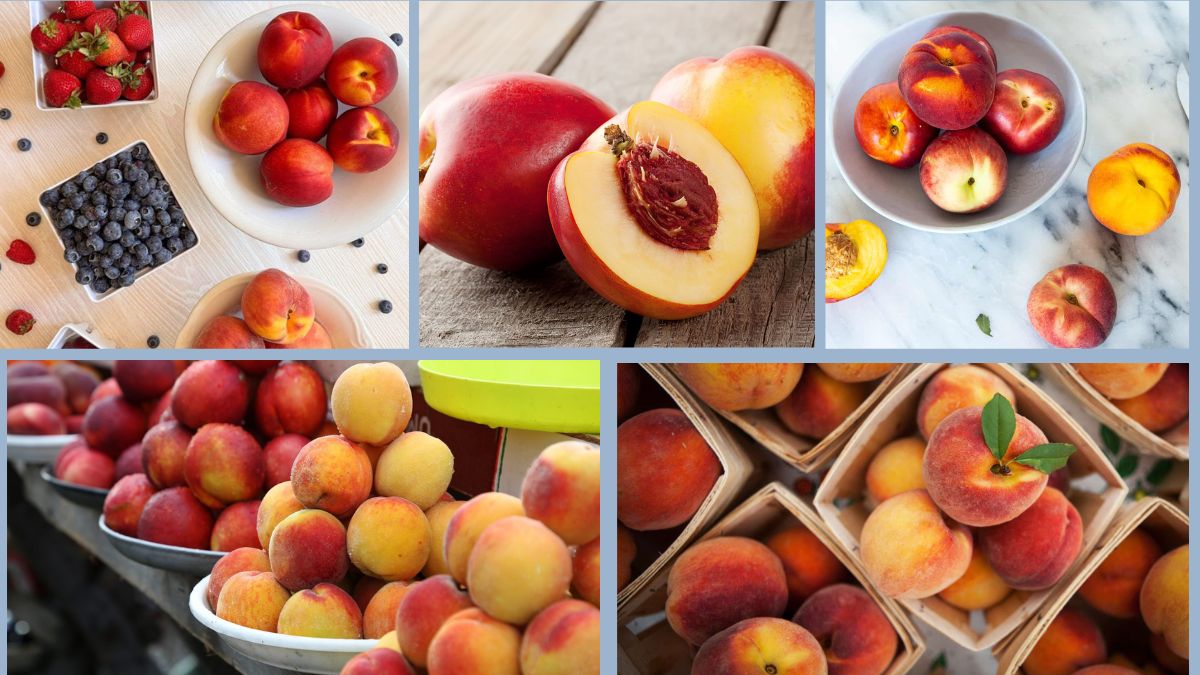Peaches and nectarines are nature’s candy — juicy, fragrant, and bursting with flavor. Whether you’re enjoying them fresh, baking them into pies, or slicing them over your morning oatmeal, these stone fruits are beloved in kitchens worldwide.
But they’re also delicate and highly perishable. If not stored correctly, peaches and nectarines can quickly go from firm and flavorful to mushy, bruised, or moldy. Fortunately, with the right knowledge and natural methods — without any non-vegetarian additives or chemicals — you can control ripening, prevent spoilage, and make the most of every fruit.
This comprehensive guide will show you how to store peaches and nectarines at every stage of ripeness, whether whole or cut, so they stay fresh and delicious for longer.
Understanding Peaches vs. Nectarines: Are They Different?
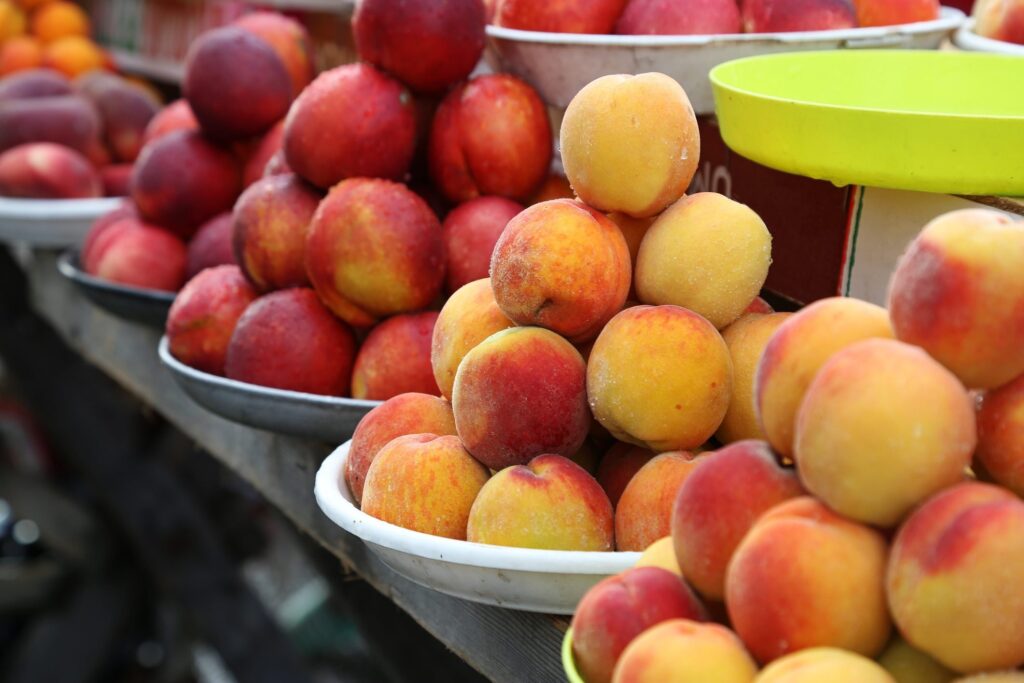
Peaches and nectarines are nearly identical in structure and nutritional content. The primary difference lies in their skin:
- Peaches: Fuzzy skin
- Nectarines: Smooth skin
Storage techniques for both are the same, so this guide applies to both fruits equally.
Step 1: Know the Ripeness Stage
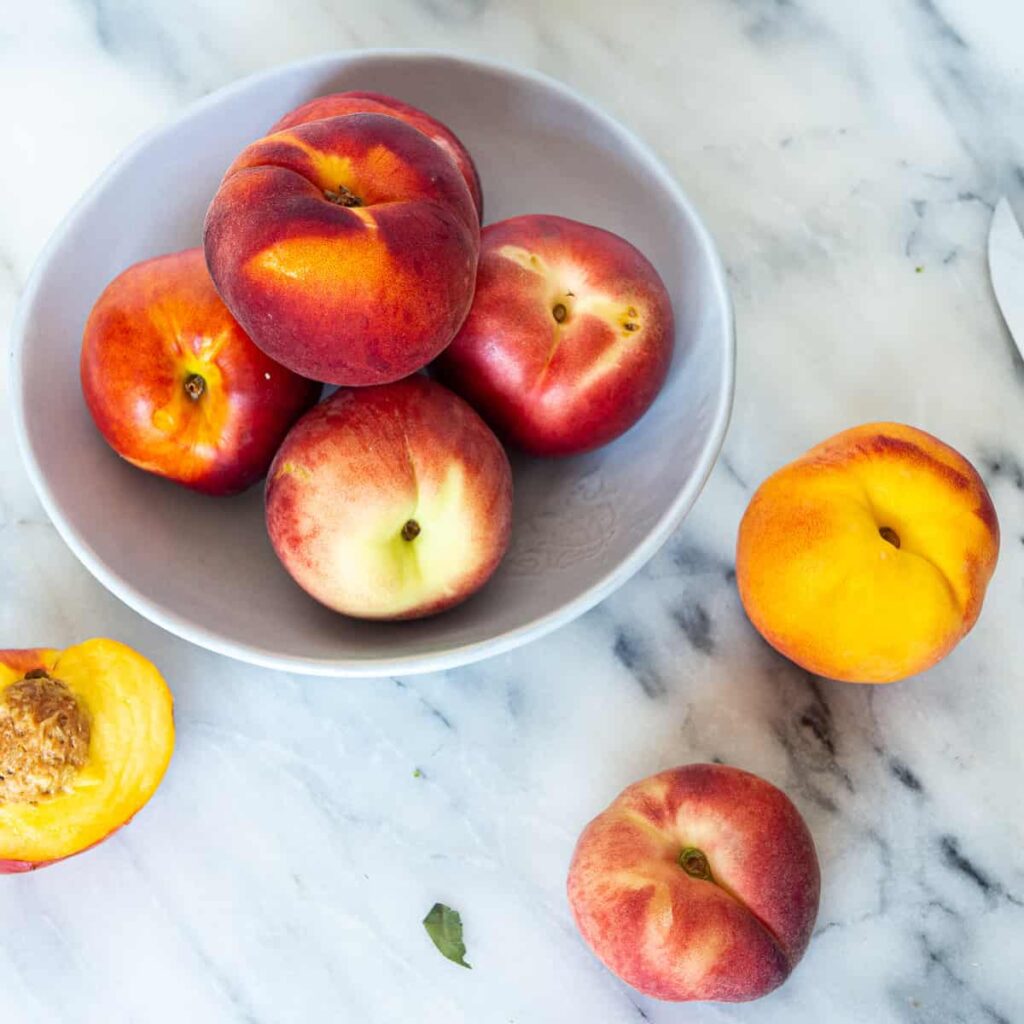
Knowing whether your fruit is unripe, ripe, or overripe helps determine the best storage method.
| Stage | Feel | Color (depends on variety) | Action Needed |
|---|---|---|---|
| Unripe | Firm, no give | Greenish or pale yellow/orange | Ripen at room temperature |
| Ripe | Slightly soft | Rich yellow, orange, red hues | Use or refrigerate |
| Overripe | Very soft, bruising | Dull color, may have dark spots | Use immediately or freeze |
Step 2: Storing Unripe Peaches and Nectarines
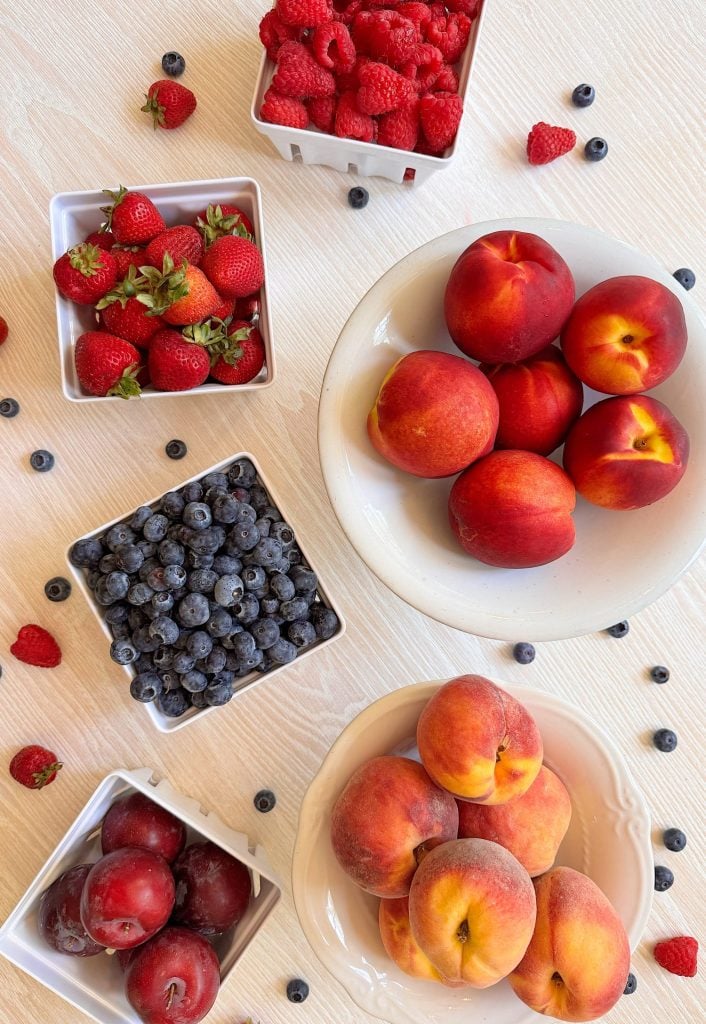
If your fruit is firm and not ready to eat, allow it to ripen naturally at room temperature.
How to Ripen Naturally:
- Place fruits stem-side down on a clean cloth or paper towel.
- Keep them in a cool, dry place, away from direct sunlight.
- Check daily for softness and aroma.
Time to ripen:
Usually 2–4 days
Don’t refrigerate unripe peaches/nectarines. Cold temperatures stop the ripening process and can ruin flavor and texture.
Speed Up Ripening (Naturally):
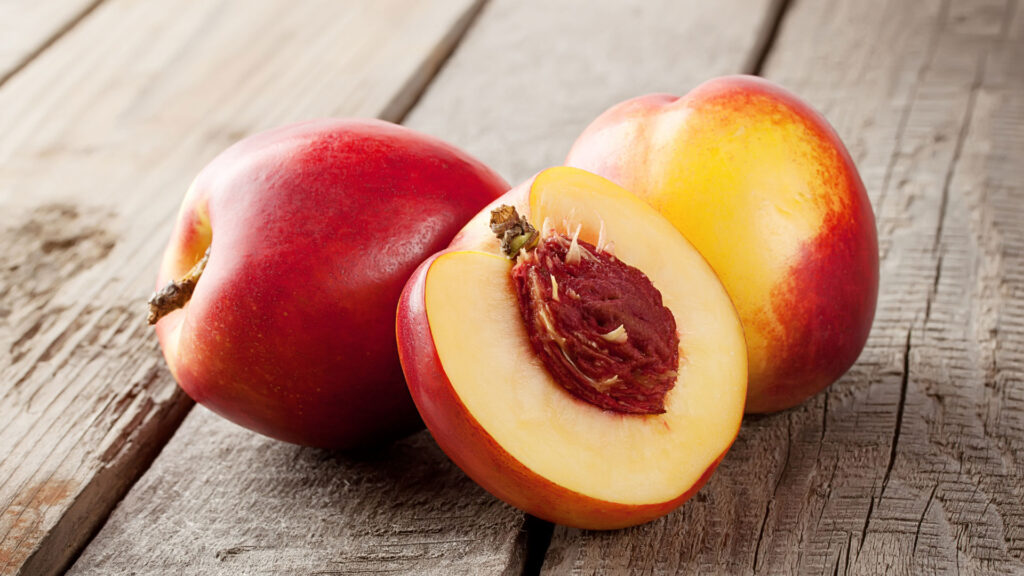
Want them to ripen faster?
- Place peaches/nectarines in a paper bag with an ethylene-producing fruit like:
- A banana
- An apple
- Fold the bag closed loosely and leave at room temperature.
Why this works:
Ethylene gas produced by the banana or apple accelerates ripening in the enclosed space.
Step 3: Storing Ripe Peaches and Nectarines
Once your fruit is perfectly ripe — fragrant and slightly soft to the touch — it’s time to slow down ripening by transferring it to a cooler environment.
Refrigerate to Preserve Ripeness:
- Place ripe fruit in the refrigerator’s crisper drawer.
- Use reusable produce bags, paper bags, or store loose to prevent bruising.
- Keep away from strong-smelling foods, as peaches easily absorb odors.
Shelf Life:
4–5 days in the fridge
Tip: Bring refrigerated peaches to room temperature before eating for the best texture and flavor.
Step 4: Storing Cut or Sliced Peaches and Nectarines
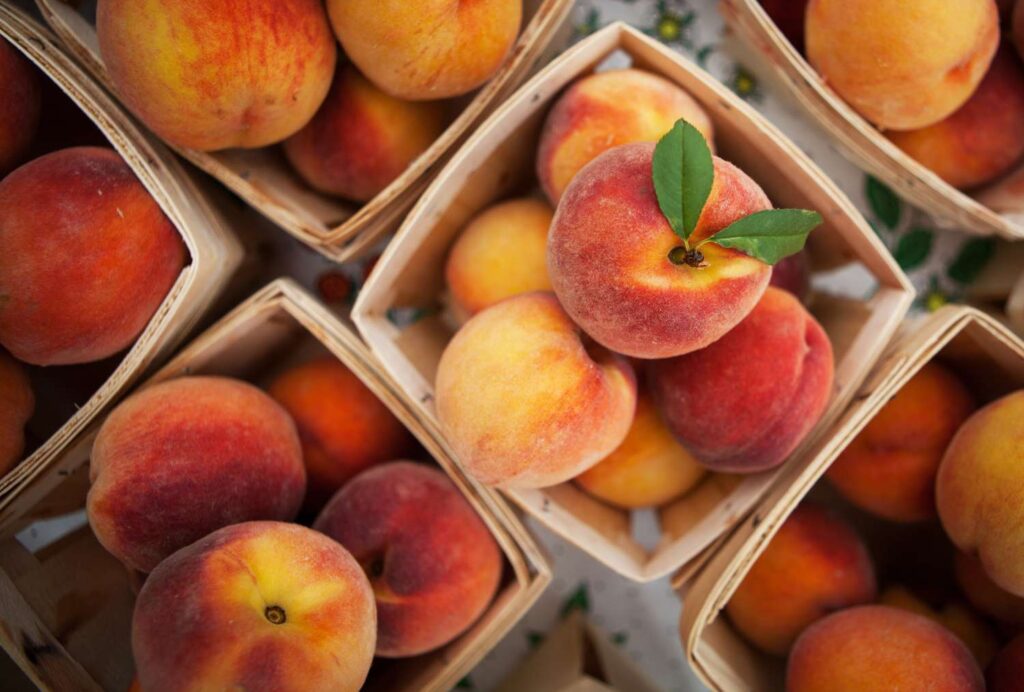
Once sliced, these fruits begin to oxidize, leading to browning and texture loss.
How to Store Cut Fruit:
- Sprinkle with a little lemon or lime juice to slow browning (100% vegetarian method).
- Store in an airtight glass or BPA-free plastic container.
- Refrigerate immediately.
Shelf Life:
2–3 days
You can also use a layer of food-safe beeswax wrap over the cut surface to limit oxygen exposure.
Step 5: Freezing for Long-Term Storage
If you have too many ripe fruits or want to preserve them for later, freezing is the best option.
How to Freeze Peaches and Nectarines (No Non-Veg Additives):
Option A: Sliced (Best for smoothies, pies, sauces)
- Wash, dry, and peel (optional).
- Slice the fruit and remove pits.
- Toss slices gently in lemon juice to prevent browning.
- Spread on a tray in a single layer and freeze for 2–3 hours.
- Transfer frozen slices to an airtight container or freezer-safe bag.
Option B: Pureed
- Blend ripe fruit into a puree.
- Freeze in silicone trays or ice cube molds.
- Once frozen, transfer to bags.
Freezer Shelf Life:
6–8 months for best flavor and color
Avoid freezing whole fruits with the pit — they won’t thaw evenly and are harder to use.
Step 6: Avoid Common Storage Mistakes
Here’s what to watch out for to keep your peaches and nectarines fresh:
Mistake #1: Refrigerating Unripe Fruit
Cold temperatures stop the ripening enzymes and leave the fruit mealy.
Mistake #2: Leaving Ripe Fruit on the Counter Too Long
Once soft, they’ll spoil quickly — especially in warm weather.
Mistake #3: Stacking Fruits in Baskets
This causes pressure bruises, especially in ripe fruits. Store in a single layer when possible.
Mistake #4: Not Checking for Mold
Always remove any overripe or moldy fruit from the batch — mold spreads easily.
Bonus: Revive Slightly Overripe Peaches
If your fruit is starting to go mushy but isn’t spoiled yet, use it in:
- Smoothies – Blend with banana, oats, or dairy-free milk.
- Chutneys or sauces – Simmer with ginger, mustard seeds, and jaggery for a sweet-spicy condiment.
- Vegan baking – Mash and use in muffins or quick breads as a natural sweetener and moistener.
Peaches and nectarines pair beautifully with cinnamon, cardamom, and coconut in plant-based recipes.
Quick Comparison: Peaches vs Nectarines Storage Tips
| Feature | Peaches | Nectarines |
|---|---|---|
| Skin | Fuzzy | Smooth |
| Ripening Time | 2–4 days | 2–3 days |
| Fridge Life | 4–5 days when ripe | 4–5 days when ripe |
| Freezing | Sliced or pureed | Sliced or pureed |
| Cut Storage | Airtight, lemon juice coated | Same as peaches |
Both fruits are 100% plant-based and require no animal products for preservation.
Final Thoughts: Store Smart, Waste Less, Enjoy More
Peaches and nectarines are truly seasonal delights, but their short shelf life makes them tricky to handle. By learning to identify ripeness, applying the right storage technique at each stage, and freezing what you can’t use right away, you can enjoy these stone fruits longer — naturally and waste-free.
Whether you’re packing school lunches, prepping fruit bowls, or stocking up from the farmer’s market, these vegetarian-friendly storage methods ensure that every bite stays fresh, juicy, and flavorful.
So the next time you spot ripe peaches or nectarines, don’t worry about rushing to eat them. Store them right — and savor their sweet goodness on your schedule.
